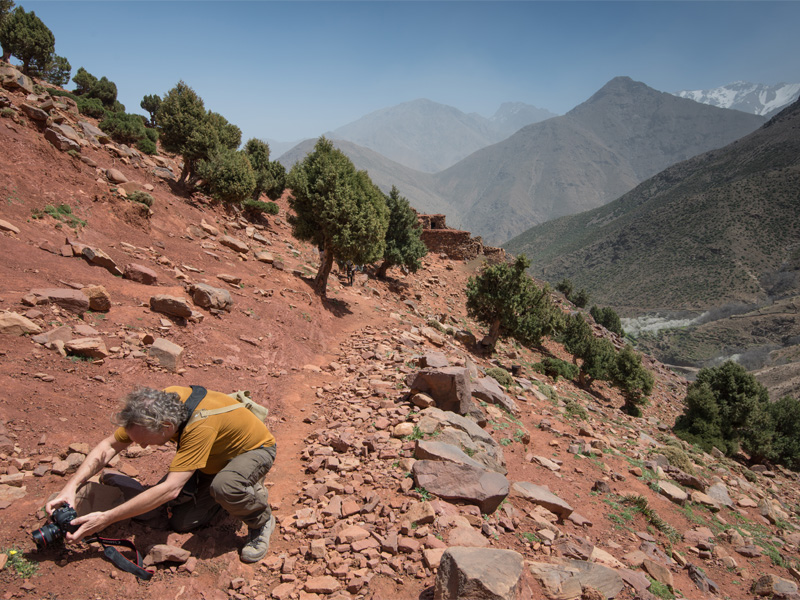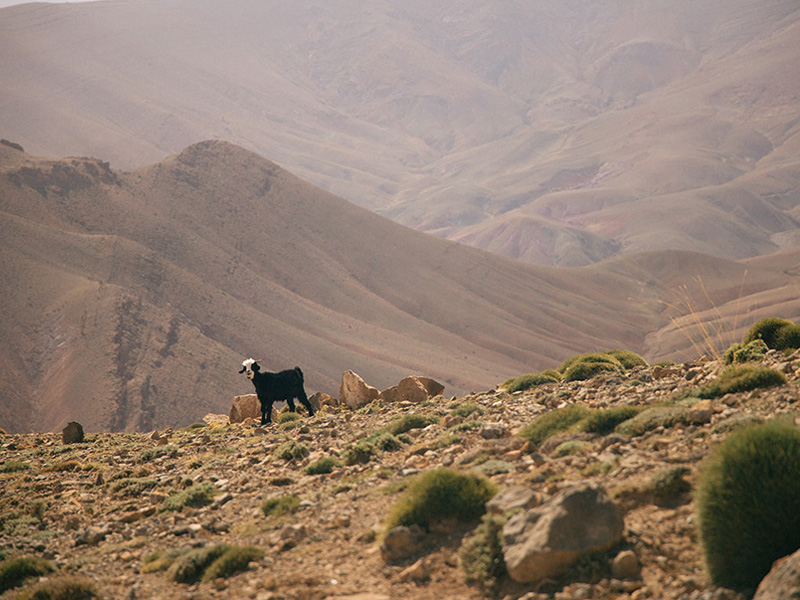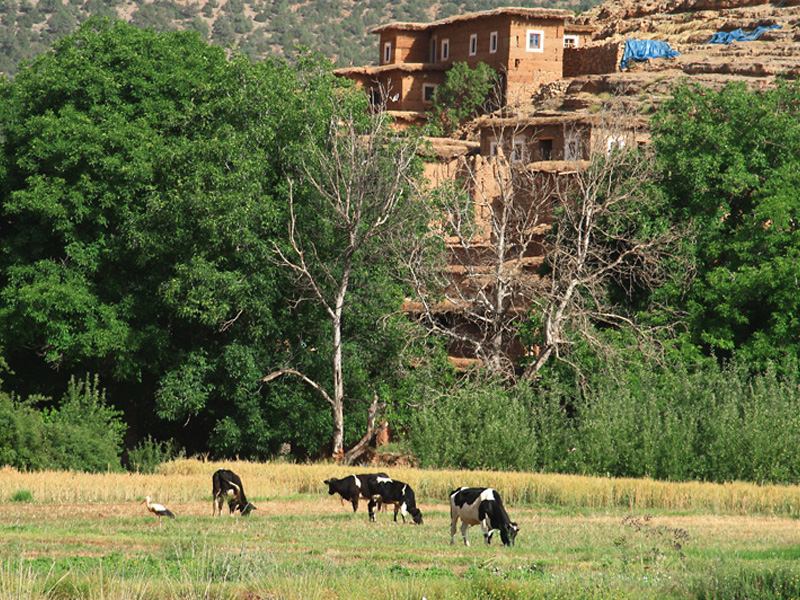The Ultimate Guide To Hike In The Atlas Mountains
The Atlas Mountains are a breathtaking range that stretches across three countries in North Africa: Morocco, Algeria, and Tunisia. With their diverse geography, rich cultural heritage, and stunning vistas, the Atlas Mountains offer a paradise for hiking enthusiasts. In this ultimate guide, we will explore the various aspects of hiking adventure in the Atlas Mountains range, from choosing the perfect trail to preparing for a safe journey.
An Overview of the Atlas Mountains
The Atlas Mountains, also known as the backbone of North Africa, boast an impressive geographical profile. The range extends approximately 2,500 kilometers, making it one of the longest mountain chains in the world. It is divided into three main sections: the High Atlas, the Middle Atlas, and the Anti-Atlas. Each section offers unique landscapes, ranging from snow-capped peaks to lush valleys and deep gorges.
The cultural diversity found within the Atlas Mountains is equally remarkable. The region is home to numerous indigenous Berber communities, each with its own distinct traditions and languages. Centuries-old Berber villages, ancient ruins, and traditional kasbahs dot the mountain slopes, bearing witness to the historical significance of the area.
The climate in the Atlas Mountains varies depending on altitude and season. Generally, the best time to visit for hiking adventures is during the spring and autumn months. When temperatures are moderate and rainfall is minimal. Summers can be quite hot, especially at lower elevations, while winter brings snow, creating a unique opportunity for winter mountaineering.
Choosing the Perfect Trail
Selecting the right trail is crucial to ensure a fulfilling hiking adventure in the Atlas Mountains. The difficulty level of a trail depends on various factors, including your fitness level, hiking experience, elevation gain, distance, weather conditions, and terrain.

Settling on the Right Difficulty Level
When choosing a trail, it’s essential to evaluate your fitness level and prior hiking experience. If you’re a beginner, it’s advisable to start with relatively easier trails that provide a gentle introduction to the Atlas Mountains.
For seasoned adventurers, there are numerous challenging hikes that offer a greater test of physical endurance and navigation skills. These trails often involve steeper ascents, longer distances, and more rugged terrains. Examples include the ascent of Mount Toubkal, the highest peak in North Africa, and the challenging Tizi-n-Test Pass trail.



Soaking up the Scenic Beauty: From Valley Trails to Summit Ascents
No matter your experience level, the Atlas Mountains have something to offer for all hikers. Those seeking to immerse themselves in the stunning beauty of valleys and gorges can explore trails such as the Ourika Valley, Imenane Valley, and the Dades Gorges. These trails showcase the lush greenery, clear rivers, and dramatic rock formations that characterize the Atlas Mountains.
For those drawn to mountain peaks, there are exhilarating treks that lead to stunning summits. Mount Toubkal, Ouanoukrim Peak, and M’goun Massif are among the notable peaks that can be conquered by dedicated hikers. The panoramic vistas from these summits are truly awe-inspiring.
Alternatively, if you prefer a mix of panoramic vistas and hidden gems, trails like the Tichka Pass and the Ait Bouguemez Valley provide a perfect balance. These routes offer stunning views of the surrounding landscapes while allowing opportunities for cultural immersion and encounters with local communities.
Eco-Tourism and Community-Focused Trails
As responsible travelers, it’s important to engage in eco-tourism practices and support local communities during our hiking adventures. The Atlas Mountains offer an array of trails that not only showcase the natural beauty of the region but also contribute to sustainable initiatives and cultural immersion.
One way to practice eco-tourism is by adhering to Leave No Trace principles, which include packing out all waste and respecting wildlife habitats. Additionally, consider participating in community-focused trails that provide opportunities to interact with local communities and support their initiatives, such as traditional handicrafts or sustainable agriculture projects.



Essential Preparations for a Safe Journey
Before venturing on a hiking adventure in the Atlas Mountains, adequate preparation is necessary to ensure a safe and enjoyable experience.
Packing Essentials for Your Hiking Adventure
When packing for your hiking adventure, it’s important to consider the varied weather conditions in the Atlas Mountains. Layered clothing is essential to handle temperature fluctuations, including lightweight breathable fabrics for warmer days and warmer layers for colder nights. Don’t forget to pack a waterproof jacket and sturdy hiking boots to protect against rain and rugged terrains.
Proper hiking gear and equipment are equally vital. Essential items include a backpack, a good quality sleeping bag, a tent, a headlamp, a water filtration system, trekking poles, and a detailed map of the trails you plan to explore.
Emergency supplies should also be included in your packing list. Carry a first aid kit, a whistle, a compass, a multi-tool, a thermal blanket, and sufficient food and water to last for the duration of your hike.
Understanding Altitude Sickness and Acclimatization
Hiking adventure in the Atlas Mountains at high altitudes can pose a risk of altitude sickness, also known as acute mountain sickness (AMS). It’s crucial to recognize the symptoms of AMS, which can include headaches, dizziness, nausea, and fatigue. If you experience any of these symptoms, it’s important to descend to a lower altitude and seek medical attention if necessary.
To acclimatize properly, it’s recommended to spend a few days at lower elevations before attempting higher altitude hikes. This allows your body to adjust gradually to the decreased oxygen levels. Stay well-hydrated, avoid alcohol and smoking, and listen to your body’s signals throughout the acclimatization process.

Ensuring Safety: Hiking Etiquette and Navigation Tips
Maintaining proper hiking etiquette is crucial for the safety and preservation of the Atlas Mountains. Respect trail etiquette by staying on designated paths, avoiding littering, and being mindful of local wildlife and plant species. Familiarize yourself with any conservation guidelines or restrictions in the area you are visiting.
Navigation tools, such as a reliable map and a compass, are essential for a successful hiking adventure in the Atlas Mountains. Familiarize yourself with the trail routes and carry a detailed map to ensure you stay on the right track. Additionally, take note of any trail markers or signs along the way to avoid getting lost.
Always prioritize safety by taking necessary precautions and being prepared for emergencies. Inform someone of your hiking plans, carry a fully charged mobile phone, and be aware of the nearest emergency services and evacuation routes. It’s recommended to have basic knowledge of first aid and emergency protocols to handle any unforeseen situations.
Unveiling the Best Hiking Seasons and Weather Conditions
The Atlas Mountains offer a diverse range of experiences throughout the year, each season showcasing its unique charm.
Exploring the Four Seasons in the Atlas Mountains
Spring is a delightful time to explore the Atlas Mountains, as the flora bursts into bloom, painting the landscapes with vibrant colors. The moderate temperatures and occasional rainfall create a pleasant atmosphere for hiking.
Summer in the Atlas Mountains provides an escape from the heat of the lower elevations. The refreshing mountain air and cooler temperatures make it an ideal season for hiking at higher altitudes. However, keep in mind that summers can still be warm, so proper hydration and sun protection are crucial.
Autumn in the Atlas Mountains is a season of vibrant foliage and pleasant temperatures. The changing colors of the leaves add a touch of magic to the already stunning vistas, making it an ideal time to witness the beauty of the region.
For those seeking a truly unique experience, winter unveils the Atlas Mountains’ snow-capped peaks and the opportunity for winter mountaineering. The trails are less crowded, and the pristine white landscapes offer a serene and picturesque setting, although be prepared for colder temperatures and potential snowfall.


Understanding Weather Patterns and Challenges
When planning your hike, it’s important to understand the weather patterns and potential challenges you may encounter in the Atlas Mountains.
Rainfall is more common during the spring and autumn months, which can cause flash floods in some areas. It’s advisable to check the weather forecast and avoid hiking in areas prone to flooding during or after heavy rain.
Temperature variations at different altitudes can be significant in the Atlas Mountains. While lower elevations may experience mild weather, higher altitudes can be cooler or even freezing, particularly during winter. Proper layering and insulation are essential to stay comfortable and avoid hypothermia.
Wind patterns in the Atlas Mountains can be unpredictable, especially at higher elevations. Preparing for strong gusts and securing your gear and equipment accordingly is important.
Planning for Unexpected Conditions: Flexibility and Contingency Strategies
The weather in the mountains can change rapidly, so it’s important to be flexible and adapt to unexpected conditions. Monitor the weather forecast regularly and be prepared to adjust your hiking plans if necessary. It’s advisable to have alternative routes or backup plans in case of route closures or delays due to adverse weather conditions.
Stay informed about any trail closures, restrictions, or safety advisories from local authorities or park management. Having a contingency strategy will ensure that you can make the most of your hiking adventure, regardless of any unforeseen circumstances.
Summary and Frequently Asked Questions (FAQs)
In this ultimate guide, we have explored the majestic Atlas Mountains and provided a comprehensive overview of hiking adventures in this stunning region. From choosing the perfect trail to ensuring safety and appreciating the diverse seasons and weather conditions, this guide has provided valuable insights and tips for an unforgettable hiking experience.
Frequently Asked Questions (FAQs)
- What are the required permits for hiking in the Atlas Mountains?
- Certain protected areas or national parks within the Atlas Mountains may necessitate permits. It’s important to check the specific regulations and obtain any necessary permits before your hike.
- Is it safe to hike independently, or should I hire a local guide?
- While it is possible to hike independently in the Atlas Mountains, hiring a local guide is highly recommended, especially if you are unfamiliar with the area. Local guides are knowledgeable about the trails, can provide valuable insights on the cultural and natural heritage, and ensure your safety throughout the journey.
- Are there any age restrictions or fitness requirements for these hikes?
- There are no specific age restrictions for hiking in the Atlas Mountains. However, it’s important to select trails that match your fitness level and capabilities. Some hikes may involve steep ascents or rugged terrains, so it’s advisable to assess your fitness level and choose your trail accordingly.
- Are there any cultural norms or sensitivities to consider during the hikes?
- It’s important to respect the local culture and customs while hiking in the Atlas Mountains. Dress modestly, seek permission before taking photographs of people or their property, and be mindful of cultural sensitivities. Engaging in conversations and interactions with the locals can provide a deeper understanding of the cultural heritage of the region.
- What are the accommodation options available during multi-day hikes?
- In the Atlas Mountains, accommodation options during multi-day hikes can vary.
Popular trails feature traditional mountain lodges known as “refuges” or “gîtes d’étape,” providing hikers with basic facilities such as dormitory-style sleeping arrangements and meals. Certain areas permit camping, allowing a closer connection with nature.
- In the Atlas Mountains, accommodation options during multi-day hikes can vary.
- What wildlife and plant species can be encountered during the hikes?
- The Atlas Mountains are home to a diverse range of flora and fauna. On your hikes, you may encounter wildlife such as Barbary macaques, ibex, foxes, and various bird species. The region has gained renown for its distinctive plant diversity, which encompasses juniper trees, wildflowers, and medicinal herbs.




